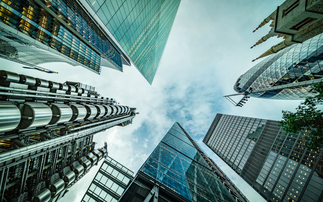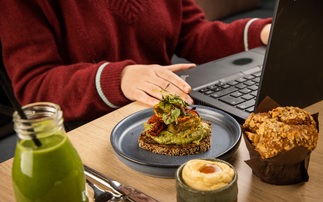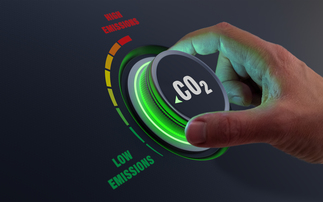'It's about working towards a direction that is commonly agreed,' says Mario Abreu, head of sustainability at the delivery giant
Developing a new sustainability strategy for a major corporate is a big ask. But it's arguably an even tougher task to re-write a sustainability strategy that has already got sign off from the board and buy-in from employees.
And yet that's exactly what Tetra Pak set out to do last year, spending nine months working out how best to re-align its existing 'Protect What's Good' sustainability strategy with the UN's Sustainable Development Goals (SDGs).
For a company already committed to sourcing green energy under the RE100 initiative and cutting carbon emissions in line with Science-Based Targets, what more could the SDGs really do to accelerate sustainability inside Tetra Pak? Why go through all that extra hassle?
For starters, the SDGs act as an additional external barometer of progress, explains Tetra Pak's vice president of sustainability Mario Abreu. They provide a tool to help convince customers and colleagues that Tetra Pak means business when it comes to sustainability, he argues.
The SDGs, he explains during a recent interview with BusinessGreen, "paint the picture about what a sustainable world is in 2030". That helps colleagues working outside of sustainability latch on to what Tetra Pak is aiming for, he explains. "For many people in the company, I would say that the fact that you have this barometer that is not something the internal sustainability [team] has created, that shows we are going in this direction it's the direction the United Nations has set - that helps," he says.
One of the benefits of building on Tetra Pak's existing strategy was that the firm was already doing a lot to address the SDGs almost inadvertently, so there wasn't much in the way of new programmes to develop. "I have to say, we already have a lot in place that we could leverage on in terms of the SDGs," Abreu says. "When it comes to climate for instance, even before we committed to the SDGs we already had climate goals in place, we already had the RE100 membership through which we had committed to go for 100 per cent renewable electricity. So we did not create too many new things."
Navigating the infamously woolly UN language of the SDGs proved slightly more challenging, Abreu admits, requiring his team at times to read between the lines of what certain targets were asking for. "When it comes to the SDG [targets] for climate action, industry cannot relate very directly to those targets," he points out. "They are more about rural electrification and so on, which industry is not going to be able to drive."
The breakthrough comes when you think in terms of the spirit of the goals, he says. "We understand where the SDGs want to go," he reflects. "They want to go to a planet where global warming is no longer going to be an issue.
"Sometimes you can take the spirit of the goal and sometimes you can take it almost by the letter. I think, inevitably, when you want something that says 'these are the 17 goals for EVERY player around the world', you cannot go very specific in terms of language. So you have to reconcile different needs and different language into something that people can sign up to."
Following the extensive nine-month analysis exercise, Tetra Pak ended up with nine SDGs it pinpointed as being able to contribute to. These included goals targeting zero hunger, responsible consumption and production, affordable and clean energy, industry and innovation, life on land, and climate action. Each of these nine goals slotted into the three pillars of the existing 'Protect What's Good' strategy: Food, People and Futures.
Most of the SDGs fall under the 'Protecting Futures' pillar, Abreu admits, particularly those relating to climate change, sustainable production, and energy and water use. For these, a particular effort is made to use science-based reporting methods to ensure progress links explicitly to the SDG sub targets.
But having done all that legwork, how does a company then ensure the SDG focus doesn't just fall by the wayside the minute everyone leaves the room from the final strategy meeting?
That's where the role of the Tetra Pak Sustainability Forum came into its own, explains Abreu. The forum brings together executives from across the business, from R&D, HR, sales, packaging design, and sustainability, to ensure that every function in the organisation stays focused on the strategy at hand. "Through the forum we are able to say 'if we want to go in that direction, all of us driving functions we all have to secure that in our own functions we are going to take actions in our own operations,'" Abreu explains. "So we can keep it bringing it back to our targets."
Having been through the SDGs with a fine tooth comb, and then embarked on the mammoth task of convincing a multi-billion Euro company to embed them into a core business agenda, what advice then does Abreu have for others?
Firstly, make sure you have the "resources and motivation" to ensure you can change things beyond the borders of your sustainability department, he advises. "Sometimes what you see is a failure of sustainability strategies because there is a group of people in some corner of your organisation that is responsible for sustainability. And normally that doesn't work."
When used right, the SDGs can act as that vehicle for keeping green issues top of mind in every sector of the business. "You cannot expect that every employee will put on a sustainability hat and say 'I'm only going to do good things from today on'," he says. "But if you convince them what they are doing, what they are creating, helps the direction that a group of different stakeholders has put together, then that helps a lot with the motivation."
His other piece of advice is to make sure you work backwards from the goals to plan specific work programmes and budgets. That helps explicitly link the SDGs, with their 2030 time frames, with the short-term focus of businesses. "It's one thing to set a goal, but then you have to do some kind of back casting," he says. "To say well if want to be 'there' in 2030, what kinds of directions do we need to be taking now? What do we need to do in three years' time? What do we need to do in five years' time? Look at budgets, look at resources."
Tetra Pak is in the business of packaging. So it's perhaps not a surprise that it wasn't daunted by the prospect of unpacking its existing sustainability strategy to work out how the SDGs could fit in. The reward for its effort is clear - a reworked strategy that makes business sense, inspires employees and aligns with the world's most important 'to-do' list.









